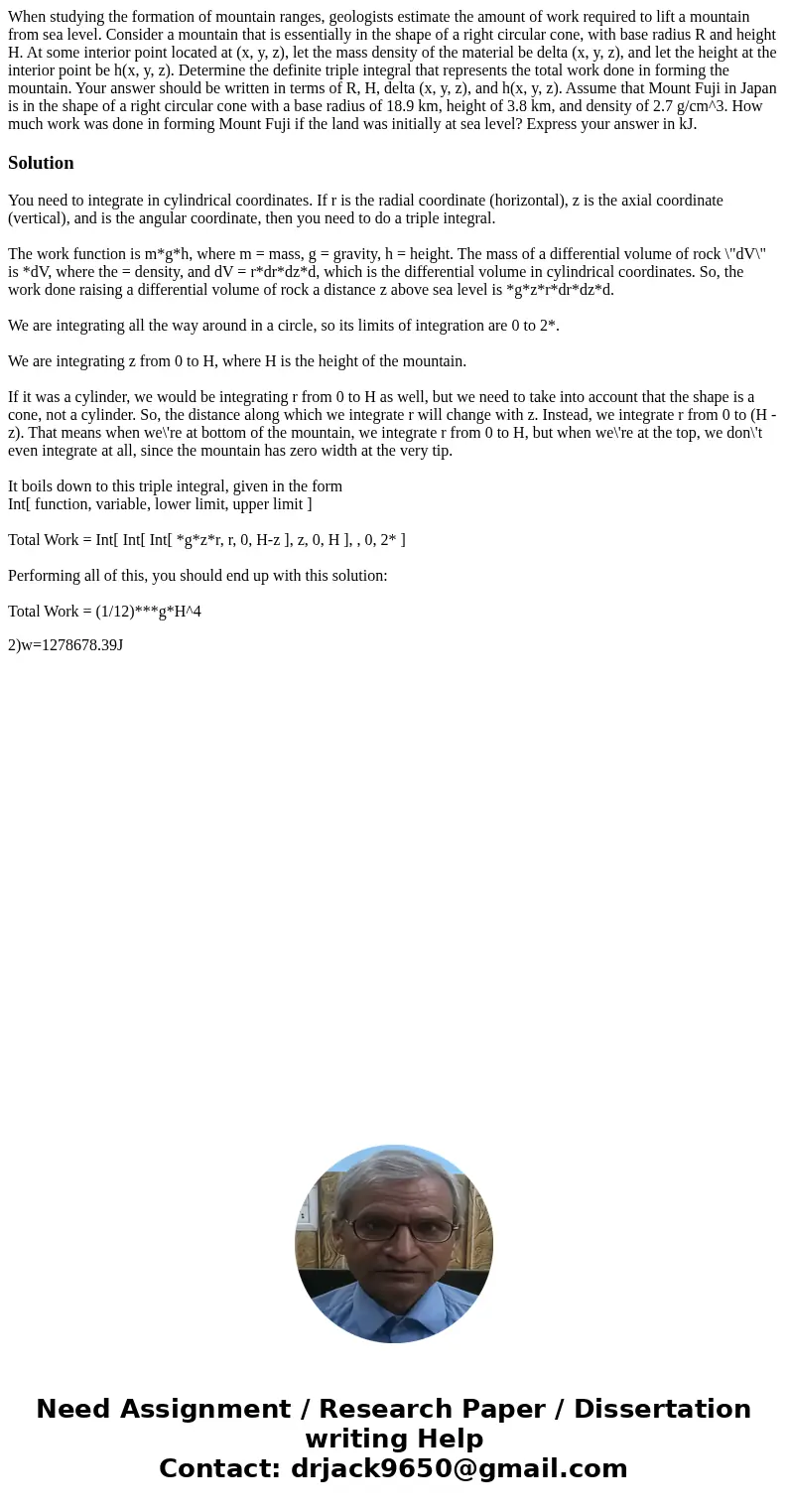When studying the formation of mountain ranges geologists es
Solution
You need to integrate in cylindrical coordinates. If r is the radial coordinate (horizontal), z is the axial coordinate (vertical), and is the angular coordinate, then you need to do a triple integral.
The work function is m*g*h, where m = mass, g = gravity, h = height. The mass of a differential volume of rock \"dV\" is *dV, where the = density, and dV = r*dr*dz*d, which is the differential volume in cylindrical coordinates. So, the work done raising a differential volume of rock a distance z above sea level is *g*z*r*dr*dz*d.
We are integrating all the way around in a circle, so its limits of integration are 0 to 2*.
We are integrating z from 0 to H, where H is the height of the mountain.
If it was a cylinder, we would be integrating r from 0 to H as well, but we need to take into account that the shape is a cone, not a cylinder. So, the distance along which we integrate r will change with z. Instead, we integrate r from 0 to (H - z). That means when we\'re at bottom of the mountain, we integrate r from 0 to H, but when we\'re at the top, we don\'t even integrate at all, since the mountain has zero width at the very tip.
It boils down to this triple integral, given in the form
Int[ function, variable, lower limit, upper limit ]
Total Work = Int[ Int[ Int[ *g*z*r, r, 0, H-z ], z, 0, H ], , 0, 2* ]
Performing all of this, you should end up with this solution:
Total Work = (1/12)***g*H^4
2)w=1278678.39J

 Homework Sourse
Homework Sourse